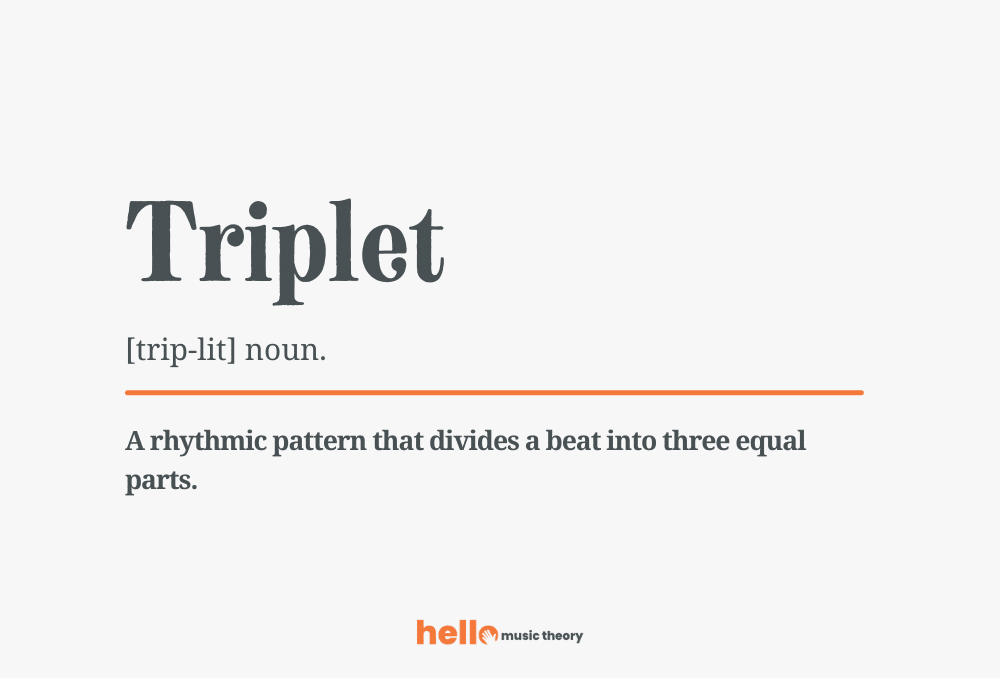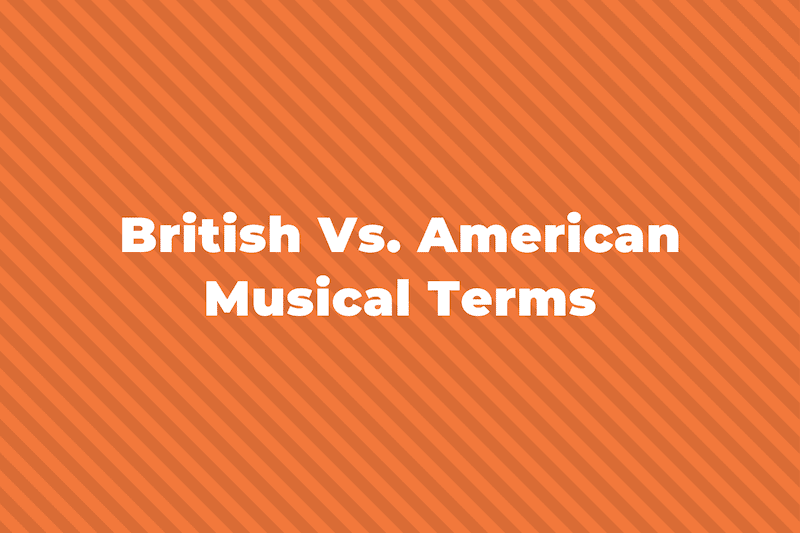When writing or playing music, sometimes we’ll want to subdivide a beat in a way that isn’t as simple as halving the note’s value. It’s in these situations that we use something called a tuplet to divide the beat up in an irregular way.
In this post, we’ll be looking at a type of tuplet called a triplet.
Definition Of A Musical Triplet

A triplet is a type of tuplet that allows us to play three notes in the time of two notes. It’s easier to explain with an example.
Every type of music note can be split up and divided into two equal beats.
For example, a whole note (or semibreve), which is worth four beats, can be divided into two half notes (minims), which are worth two beats each:

Or taking a half note, which is worth two beats, and dividing it into two quarter notes (crotchets), which are worth one beat each.

And so on…
But we can also divide beats into three equal parts, and we do this using a triplet.

This allows us to play rhythms that would otherwise not be possible to notate or at least would be very complicated.
How To Write A Triplet
We write a triplet by adding a number three above or below the notes it applies to.

Sometimes, you’ll see a bracket over the notes, as shown below. This just shows which notes are in the triplet.

You might also see it written with a curved line that looks like a slur instead of a bracket.

These brackets and curved lines don’t change the triplet. It’s just an alternate way of writing one.
Remember, to be a triplet, it needs to have a number 3 above or below the notes. A group of three beamed eighth notes is not necessarily a triplet. It could just be three eighth notes in the time signature 3/8.

Or it could be three eighth notes in a compound time signature.

How To Count A Triplet
Now we know how to write a triplet, we’ll look at how to calculate how many beats a triplet is worth.
A triplet’s duration is equal to two of the original note values. In other words, if all the notes in a triplet are the same, we take two of the notes and add their values together to get the answer.
Let’s look at some examples to better explain what I mean by this.
How To Count Quarter Note (Crotchet) Triplets
If we take the quarter note triplet below and want to know how many beats it’s worth, we take two of the notes and add them together to find out.

One quarter note beat plus one quarter note beat is equal to two quarter note beats or a half note beat.
1/4 + 1/4 = 1/2
So a quarter note triplet is equal to two quarter note beats.
How To Count Half Note (Minim) Triplets
This is the same with all the other types of

So a half note plus a half note is equal to two half note beats or a whole note beat.
1/2 + 1/2 = 1
How To Count Eighth Note (Quaver) Triplets
Eighth note triplets (quavers) are the same, we take two of the notes in the triplet and add them together.

So an eighth note plus an eighth note is equal to two eighth notes or a quarter note beat.
1/8 + 1/8 = 1/4
How To Count Sixteenth Note (Semiquaver) Triplets
Lastly, for sixteenth note (semiquaver) triplets, we take two of the notes and add them together.

A sixteenth note plus a sixteenth note is equal to two sixteenth notes or an eighth note beat.
1/16 + 1/16 = 1/8
Examples Of Triplets
Here are some extracts of music that use triplets so you can see them in action and how they’re used.
Half Note Triplets

Quarter Note Triplets

Eighth Note Triplets

Sixteenth Note Triplets

Using Triplets With Rests
A triplet doesn’t have to use only notes; it can include rests as well.
For example, we could have a quarter note triplet where one of the notes is a rest like this:

Any of these combinations are also okay:

As long as the total value of the notes and rests add up to the correct value.
Using Triplets With Other Note Values
A triplet can also contain different note values, it doesn’t just have to use three of the same note.
For example, all these examples are equal to a quarter note triplet:

Even the last one, which has four notes, is also a triplet.
Next, let’s take a look at some more examples that are all equal to an eighth note triplet:

As long as all the notes in the triplet add up to the same value as two of the original notes, then it’s okay.
Summing Up Triplets
I hope this has helped you make more sense of triplets and subdividing beats.
It can be a bit confusing at first. There are lots of other ways to subdivide beats in irregular rhythms, like duplets, quintuplets, or even septuplets.



